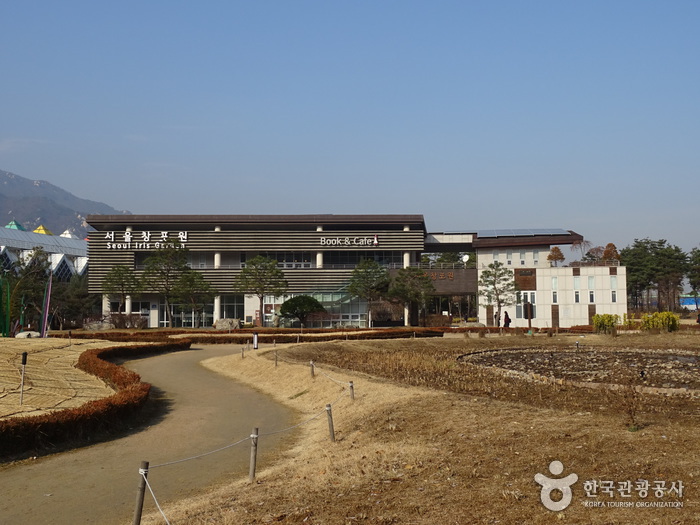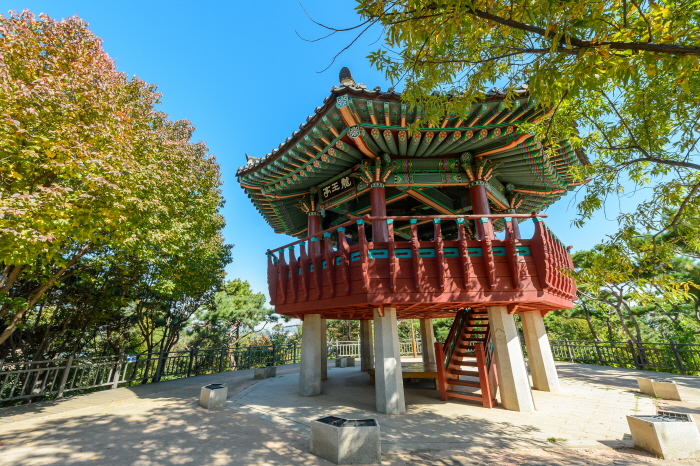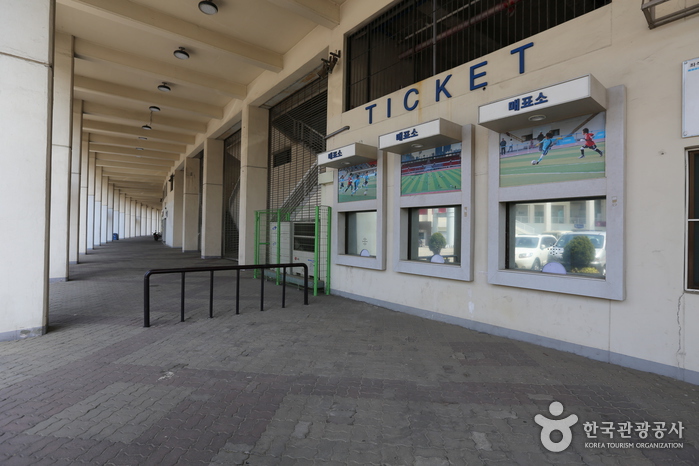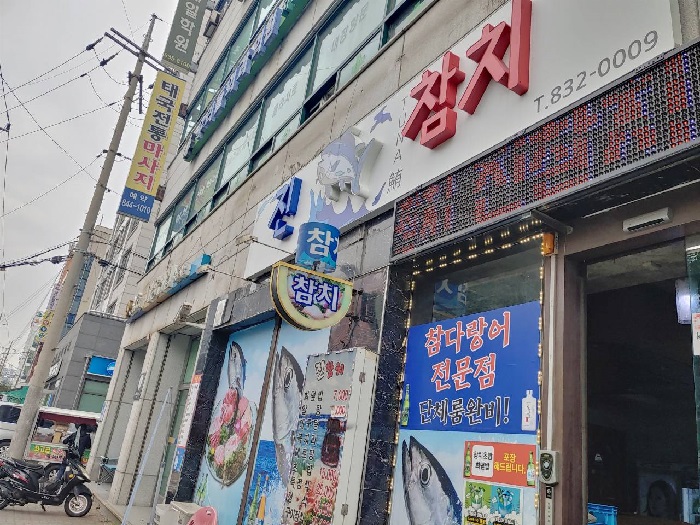Seoul Iris Garden (서울창포원)
13.7Km 2020-08-24
916, Madeul-ro, Dobong-gu, Seoul
+82-2-954-0031
Seoul Iris Garden is located between Dobongsan and Suraksan mountains in northern Seoul. The garden, measuring 52,417 ㎡, boasts a wide array of irises and other plants in 12 different themed zones including Iris Garden, Medicinal Plant Garden, and Wetland Park.
At the Iris Garden, 300,000 irises in 130 species are on display on a plot of land measuring 15,000 ㎡. Species include yellow iris, iris setosa, iris pallasii, and iris domestica, each boasting its own brilliant colors and delicate shape. The Medicinal Plant Garden is home to 130,000 plants in 70 different species of medicinal plants, allowing visitors to view the largest selection of medicinal herbs in the country. Wetland Park presents 70,000 wetland plants and houses an observatory deck from which visitors may view and learn about the diverse aquatic plants.
Cheoni Observatory within the garden provides visitors with a place take to in the beautiful scenery from above. The nearby forest lounge is a rest area for visitors as well as a center of operations for the park’s ecological education programs. Irises are in bloom from May to June of every year, but are even a sight to behold during the rest of the warmer months, given the delicate shape of their leaves.
Olive Young - Sindaebang Station Branch [Tax Refund Shop] (올리브영 신대방역)
13.8Km 2024-04-18
1F, 357, Nangok-ro, Gwanak-gu, Seoul
-
Artbox - Wirye Branch [Tax Refund Shop] (아트박스 위례)
13.9Km 2024-04-17
230, Wiryegwangjang-ro, Songpa-gu, Seoul
-
Yongwangsan Neighborhood Park (용왕산근린공원)
13.9Km 2019-08-29
143, Mokdongjungang-ro, Yangcheon-gu, Seoul
+82-2-2620-3579
Yongwangsan Mountain, also known as Eomjisan, is geologically located at entrance of a land referred to as “Cheonhojibeol,” located across an artificial waterfall. The mountain’s name “Yongwangsan” (meaning Dragon King Mountain) derived from an old tale of a king who dreamt of becoming killed. He then shot an arrow to an old man with spiritual powers living in a village at the foot of Eomjisan Mountain. The king stated “I knew that the old man would someday turn into a dragon and threaten my throne. Therefore I killed the dragon.” The words dragon (“yong”) and king (“wang”) were combined to form its current name, Yongwangsan Mountain.
Mokdong Stadium (목동운동장(목동아이스링크,사격장)
13.9Km 2022-09-14
939, Anyangcheon-ro, Yangcheon-gu, Seoul
+82-2-2240-8800
Mokdong Stadium was opened in 1989 with a stadium, a baseball field and an indoor ice rink and added footsal field in 2008 to improve Korea’s sports culture. The soccer field was used as the home field for K-league teams in the past. The ice rink hosts hockey matches and figure skating competitions as well as ice ballet performances. Other facilities include a main square, an indoor shooting range and a gym for residents to enjoy.
Olive Young - Misa Gangbyeon Branch [Tax Refund Shop] (올리브영 미사강변점)
13.9Km 2024-06-27
1F, #108, 70, Misagangbyeon-daero, Hanam-si, Gyeonggi-do
-
Jin Chamchi (진참치)
13.9Km 2021-06-30
354, Gamasan-ro, Yeongdeungpo-gu, Seoul
+82-2-832-0009
This is a place where you can enjoy delicious and nutritious tuna dishes. This Korean dishes restaurant is located in Yeongdeungpo-gu, Seoul. The representative menu is sliced raw tuna.
Cheonggyesan Mountain (청계산)
14.0Km 2024-03-20
Makgye-dong, Gwacheon-si, Gyeonggi-do
+82-2-2155-6870
Standing at 618 meters above sea level, Cheonggyesan Mountain boarders the area of Yangjae-dong, Seoul and Gwacheon-si, Seongnam-si, and Uiwang-si, Gyeonggi-do. From the top, visitors can enjoy panoramic views of Seoul's city center and Gyeonggi-do. The mountain is well-maintained with various hiking trails, making it easy to climb even for beginners. In the fall, the mountain is known for its stunning fall foliage, attracting numerous visitors.
Olive Young - Yeomchang Station Branch [Tax Refund Shop] (올리브영 염창역)
14.0Km 2024-04-22
#102, and #103, 637, Gonghang-daero, Gangseo-gu, Seoul
-
Gyeongmajang Orijip (경마장 오리집)
14.0Km 2020-06-01
20-4 Gungmal-ro, Gwacheon-si, Gyeonggi-do
+82-2-502-7500
Gyeongmajang Orijip is a Korean restaurant specializing in duck cuisine. Moreover, the restaurant is located near popular recreational facilities such as Seoul Race Park, Seoul Grand Park (zoo and botanical garden), and Gwacheon National Science Museum. The restaurant's location is perfectly suited for those who seek to enjoy nature after a hearty meal.


![Artbox - Wirye Branch [Tax Refund Shop] (아트박스 위례)](http://tong.visitkorea.or.kr/cms/resource/14/2879514_image2_1.jpg)



![Olive Young - Yeomchang Station Branch [Tax Refund Shop] (올리브영 염창역)](http://tong.visitkorea.or.kr/cms/resource/93/2880093_image2_1.jpg)
 English
English
 한국어
한국어 日本語
日本語 中文(简体)
中文(简体) Deutsch
Deutsch Français
Français Español
Español Русский
Русский